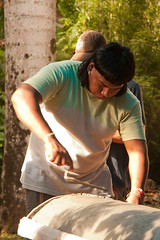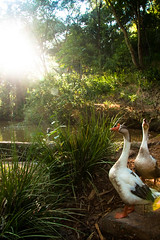COFFEE GROUNDS IN YOUR GARDEN
Don’t throw your used coffee grounds in the bin – use it on your plants and you will see the results in no time!
Coffee makes a great fertiliser primarily because of the high nitrogen content, but it also has phosphorus and potassium. Some ideas for use are:
- Use them fresh. Because they’re damp and full of nutrients, coffee grounds quickly start to go mouldy. Mouldy coffee grounds are still fine to use, but they don’t look as nice…. so you may want to compost them instead of using them as a mulch.
- Sprinkle used grounds around plants before rain or watering, for slow-release nitrogen.
- Mix into soil for houseplants or new vege patches.
- Encircle the base of the plant with a coffee and eggshell barrier to repel pests.
- It is especially good in the mulch for tomato plants for the nitrogen boost and suppresses blight.
- Reduces snails and slugs when mixed in the mulch.
- Can get rid of slugs and snails by mixing up some instant coffee and making it 2-3 times stronger than normal. Spray around where slugs roam and you will notice a drop off in damage..
- Put around where cats go to the toilet because they don’t like the texture under their paws.
- Make a liquid feed. Put about a 500g of coffee grounds into a bucket or watering can with 15L of water, leave it to warm up for a little while, and you’ve got a nitrogen-rich feed that you can use on hungry plants in your garden. The resulting feed will be slightly acidic – good for use on acid-loving plants. You can use it elsewhere, but keep an eye on your soil pH by testing your soil each season with a soil pH meter or garden chemistry test kit.
- Add coffee grounds to your compost heap. If you have a compost heap, then you can add coffee grounds – filters and all – to your heap. The carbon to nitrogen ration of coffee grounds is around 20:1, which means that it adds a nitrogen boost to your heap that can kick-start the composting process or compensate for a lot of carbon-rich ‘brown’ materials (woody plant stems, crumpled paper or cardboard). The C to N ratio of coffee grounds is similar to that of grass clippings, and because it has been ground up, it has a large surface area and breaks down quickly.
- Give your worms a boost. You can also add coffee grounds to your worm composter – the worms will love munching their way through them. In a worm composter, you’ll need to keep a careful eye on the pH levels to keep your worms happy. Balance out the acidic coffee grounds with some lime, or crushed up eggshells.



